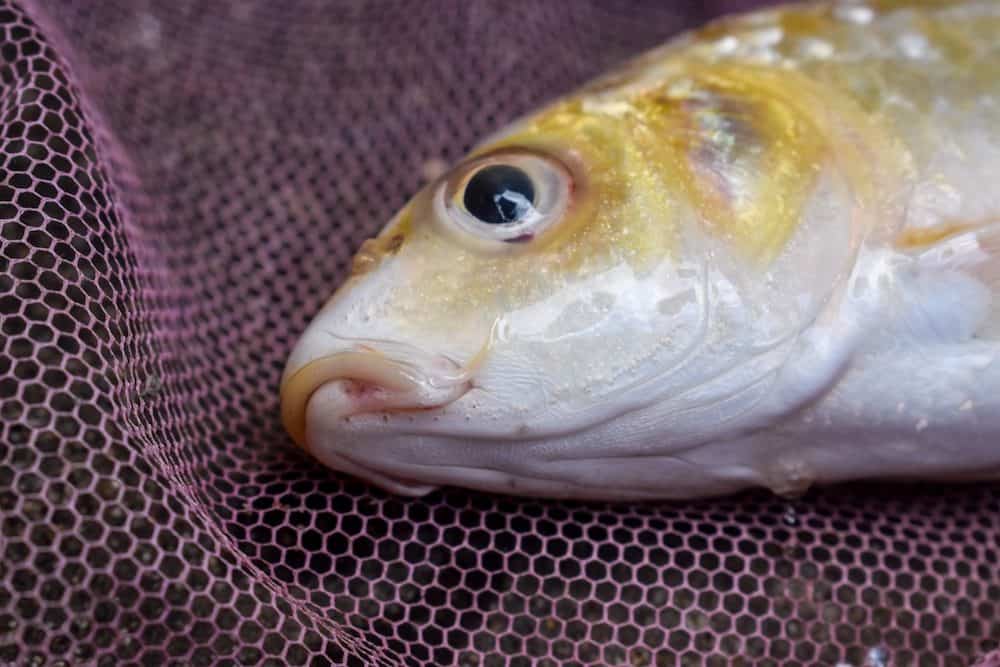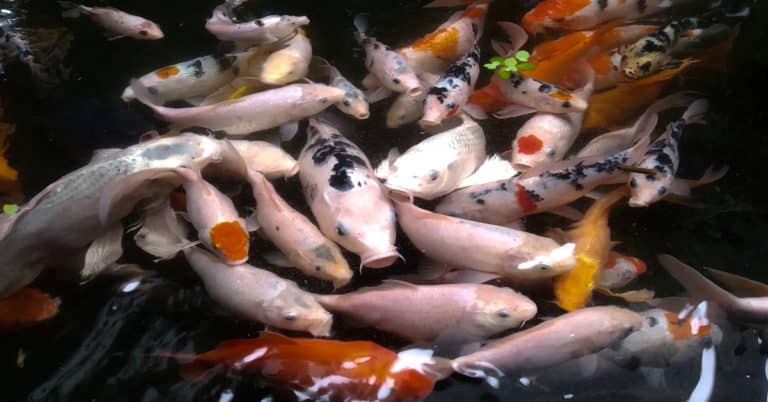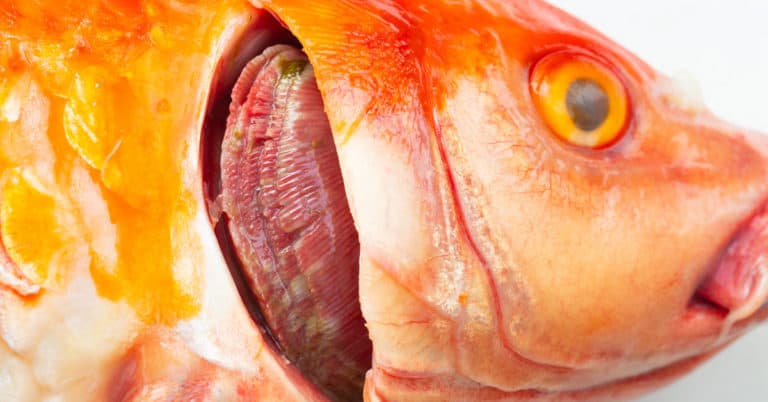Koi rely quite heavily on their eyes while in your pond. They use their eyes in conjunction with their barbels to find food and to sense potential danger in the water. It is vital that you're able to provide an environment that protects the vision of your koi.
Have you noticed that your koi fish eyes look cloudy, are abnormally protruding, or otherwise do not look quite right? If so, you are undoubtedly concerned that your koi fish may be sick. Have you tried to locate information on koi fish eye conditions but became overwhelmed by the sheer amount of information available?
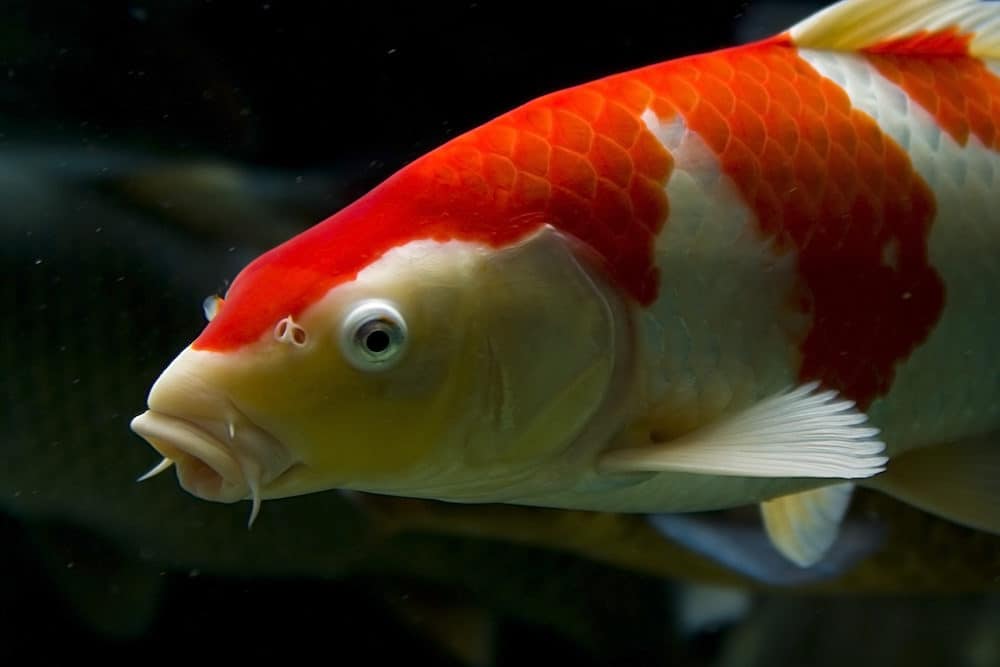
If so, fortunately, you are in the right place. This article provides you with information on koi fish eye diseases to help you identify, properly treat, and potentially prevent koi eye problems.
In humans, light passes through the clear front layer of the eye (cornea), which bends light, enabling the eye to focus. The colored portion of the eye (iris) controls how much light is allowed in the eye through the opening called the pupil. The light then passes through a clear inner portion of the eye (lens) which, together with the cornea, properly focuses light on the retina.
The human retina is the thin nerve layer that lines the back of the eye. It receives the focused light, converts it into electrical nerve signals, and sends the signals via the optic nerve to the brain for visual recognition.

Although koi fish eyes are similar to that of humans and other mammals, there are some differences, including the following:
Looking into koi fish eyes can be a helpful window into their health and well-being.
Healthy koi fish have eyes that are spherical with a dark, clear lens. If the shape, structure, color, or luster appears abnormal, various health conditions or diseases may be responsible. For example, you may detect the following koi fish eye abnormalities:
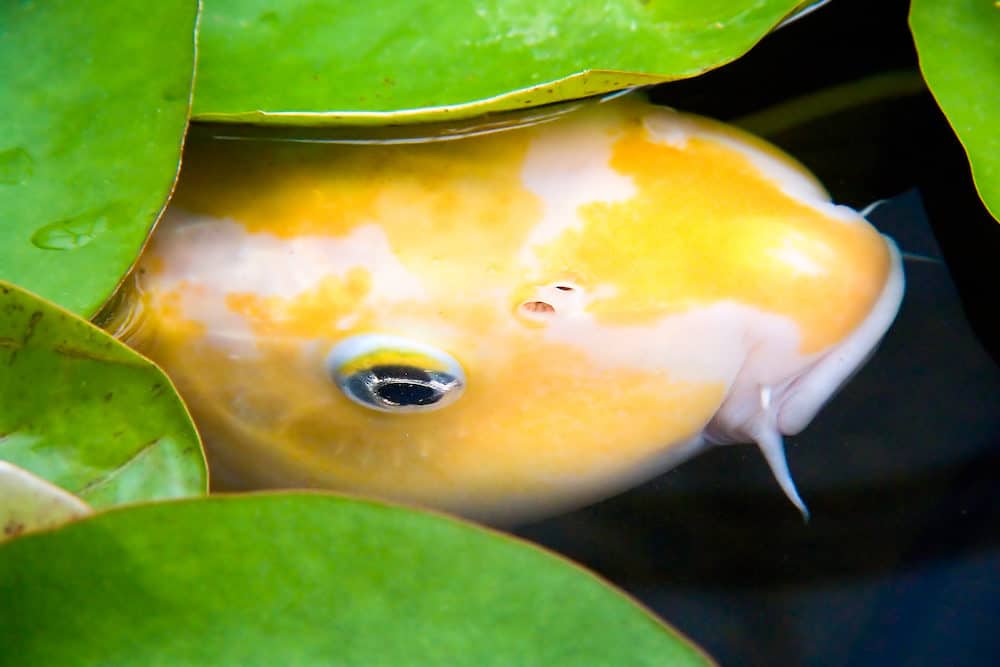
In koi fish with Popeye disease, leakage of fluid behind the eyeball may cause swelling. The eye may appear cloudy, discolored, or even bloodstained (if caused by an injury). In serious cases, infected eyes affected by Popeye disease may rupture if treatment is not received. The koi may recover over time but will experience blindness of the ruptured eye.
There are several potential causes of Popeye disease, including the following:
Examine the eye to determine whether there is any damage, which will strongly suggest that an injury caused the swelling. In most cases, as the injured eye heals, the swelling eases and the protruding eye begins to recede. Yet be sure to monitor your fish carefully since a damaged eye may become infected, which in turn could cause vision loss.
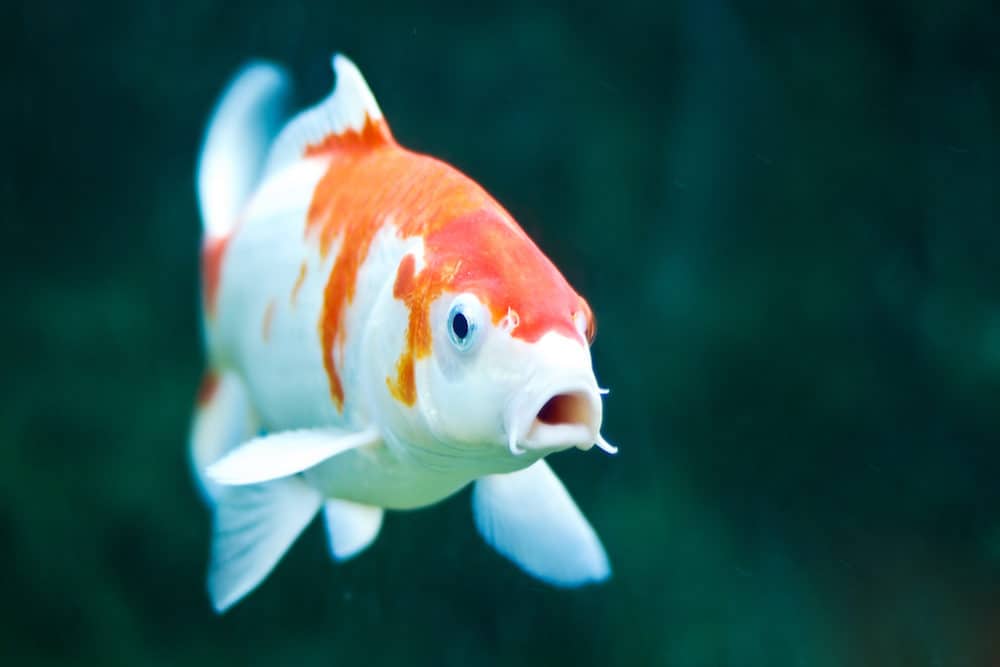
Also known as Pinecone or Bloater disease, dropsy causes the eyes to protrude and the fish scales to stick out from the body. Pressure secondary to fluid build-up causes this abnormal pinecone appearance.
In addition to popeye, a distended belly, and raised scales, symptoms of dropsy may include loss of appetite, gasping, and unbalanced swimming.
Such symptoms usually develop in the final stages of bacterial infection, where there is often widespread internal organ damage and failure. As a result, dropsy unfortunately has a high mortality rate. Such bacterial infection may be caused by Pseudomonas or Aeromonas bacteria, the most common bacteria found in koi ponds. These bacteria can enter the body through wounds or open sores on the fish caused by parasite bites.
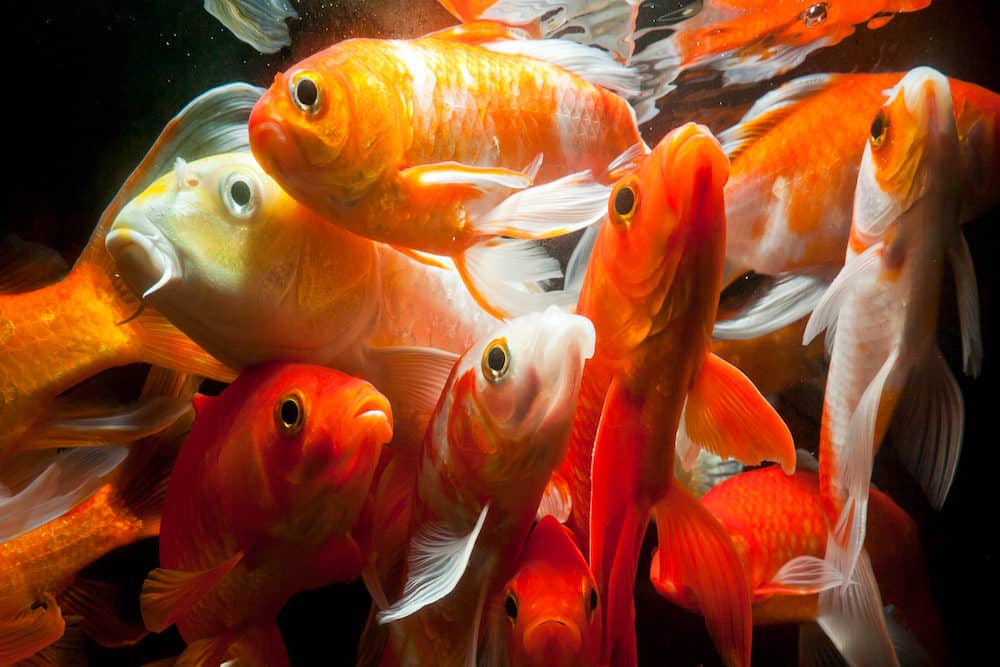
Dropsy may also result from kidney (renal) failure, fluid retention, congenital heart disease, or, in rare cases, viral infection or Mitraspora cyprini, a rare parasitic infection that attacks the kidneys.
The treatment for koi fish with Popeye disease will vary depending on the cause. In cases where popeye develops due to an injury, relieve pain by using aquarium salt until the injury heals, unless it is specifically contraindicated for your koi.
As your koi is recovering, regularly change the water and carefully monitor the water’s chemistry. If your water tests show high levels of ammonia or nitrite or improper pH level (pH drift), immediately take necessary measures to correct the issue to prevent further stress on your koi.

If your koi has a bacterial infection, move it to a quarantined fish tank to prevent the infection from spreading to your other koi. Ask your aquatic veterinarian or pet supplier to recommend an appropriate broad-spectrum antibiotic fish food to treat the bacterial infection or your aquarium and pond water if more than one koi has the bacterial infection.
If you suspect that your koi has a parasitic infection, your aquatic veterinarian can conduct skin or gill biopsies to confirm the diagnosis and provide appropriate treatment.
Koi fish may develop slight clouding over the eyes or, in some cases, the eyes may become a nearly opaque white. But rather than a disease, cloudy eye is a condition that develops secondary to an underlying cause, such as parasitic or bacterial infection. Because this may be a symptom of a serious underlying condition, it is crucial to identify and treat its cause immediately.
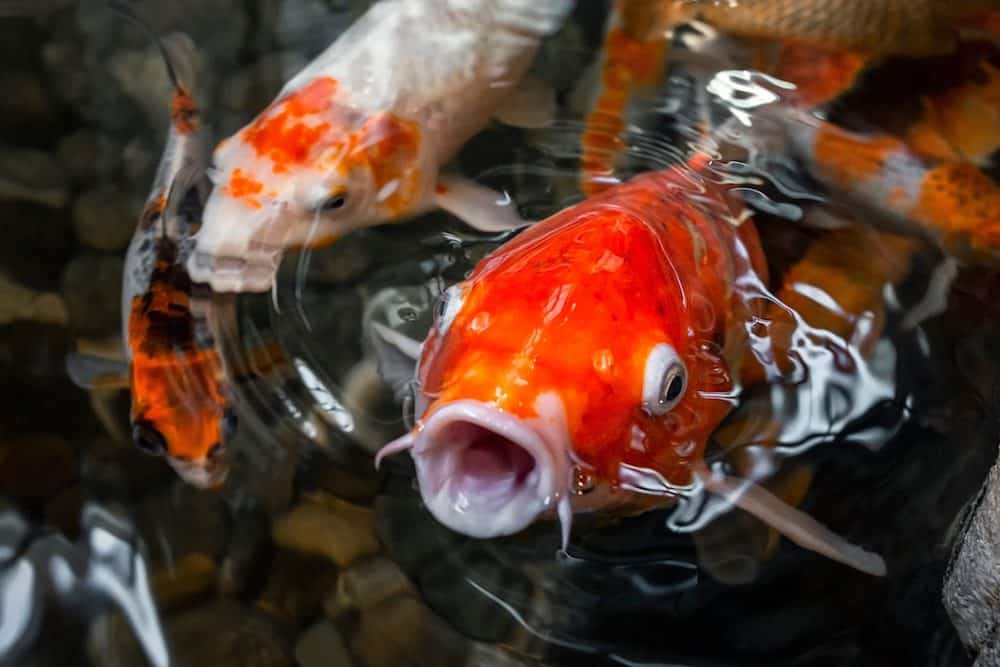
The symptoms associated with cloudy eyes may be variable depending on the underlying cause. However, they may include the following:
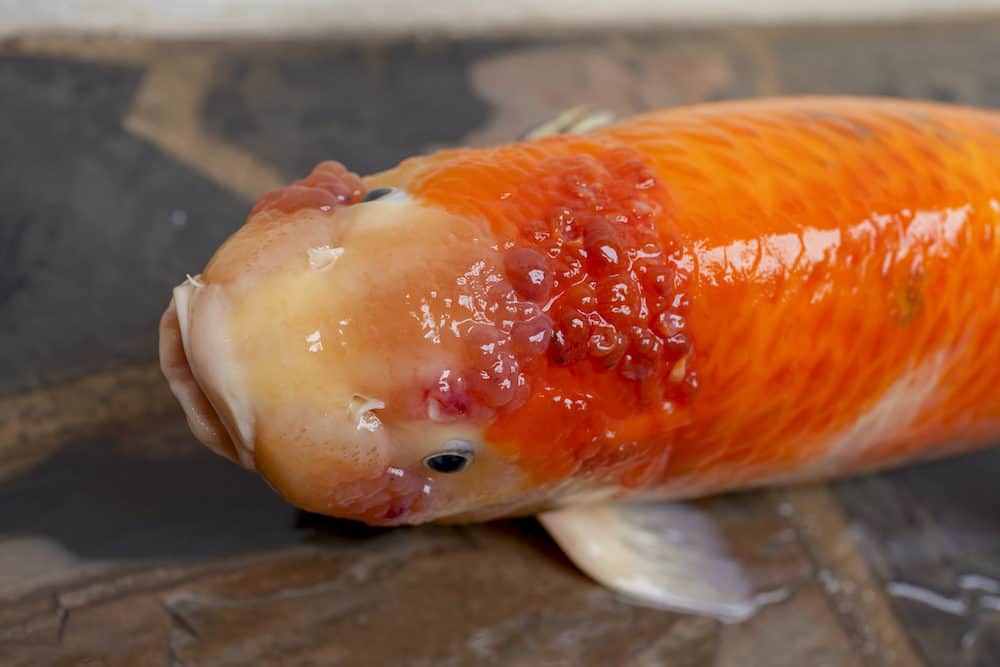
Cloudy eyes may develop due to low water pH, poor water quality, improper use of water treatments, injury, bacteria, viruses, parasites, or fungi. The most frequent causes are bacteria and degraded water quality.
Koi cloudy eyes may develop due to the following:
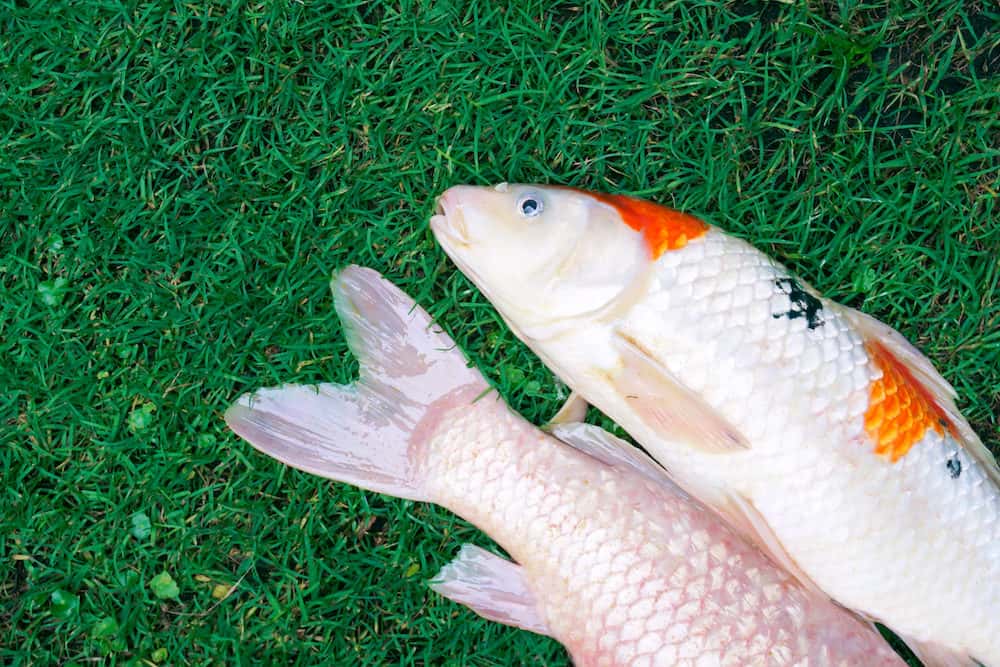
Poor water quality may often be responsible if your koi fish develops cloudy eyes due to fungal, parasitic, or bacterial infection. However, in some cases, introducing new koi may cause said infection. Therefore, it’s always a good idea to quarantine any new fish for several days to detect infections that could spread to your other koi.
If a koi has just one cloudy eye, chances are that it injured the eye. Or if your koi is an older fish, the cloudy eye may be due to cataracts.
If a koi has bilateral cloudy eyes and other fish also share the same condition, this suggests a bacterial or other infection that should be diagnosed and treated as promptly as possible. Contact your aquatic veterinarian, describe the situation, and ask whether you should take water samples from the pond and light skin scrapings from your fish for evaluation.
Again, the treatment of cloudy eyes may vary depending upon the underlying cause. Such steps may include the following:
